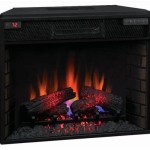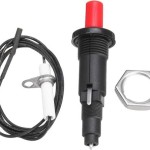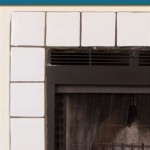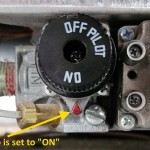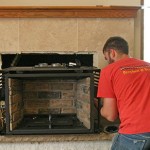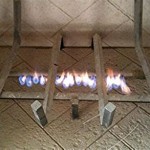The Appeal and Considerations of Propane Gas Outdoor Fireplaces
Outdoor fireplaces have become increasingly popular as homeowners seek to extend their living spaces and create inviting environments for relaxation and entertainment. Among the various fuel options available, propane gas fireplaces offer a compelling blend of convenience, efficiency, and aesthetic appeal. This article delves into the advantages and disadvantages of propane gas outdoor fireplaces, exploring the key considerations for homeowners contemplating this addition to their outdoor space.
Propane, a liquefied petroleum gas (LPG), is a readily available and relatively clean-burning fuel source. Its widespread availability and ease of transportation make it a practical choice for powering outdoor appliances, including fireplaces. Unlike wood-burning fireplaces, propane models eliminate the need for hauling and storing firewood, reducing mess and physical labor. Furthermore, propane fireplaces offer instant ignition and adjustable flame heights, providing a level of control and convenience that is difficult to achieve with traditional wood fires.
Advantages of Propane Gas Outdoor Fireplaces
The popularity of propane gas outdoor fireplaces stems from a multitude of benefits they offer to homeowners seeking to enhance their outdoor living experience. These advantages encompass convenience, environmental considerations, and design flexibility.
Convenience and Ease of Use: Propane fireplaces are known for their user-friendliness. With a simple push of a button or turn of a knob, the fire ignites instantly. This eliminates the need for kindling, newspaper, and the often-frustrating process of starting a wood fire. Furthermore, the flame height is easily adjustable, allowing homeowners to tailor the heat output and ambiance to their specific needs. When the evening is over, the fire can be extinguished just as quickly and easily, leaving no smoldering embers or lingering smoke. This convenience makes propane fireplaces ideal for spontaneous gatherings and moments of relaxation without the fuss and preparation associated with wood-burning options.
Environmental Advantages: While no combustion process is entirely emission-free, propane burns significantly cleaner than wood. Propane combustion produces fewer particulate matter emissions, which contribute to air pollution and respiratory problems. Wood-burning fireplaces, on the other hand, release substantial amounts of smoke, soot, and other harmful pollutants into the atmosphere. By choosing a propane fireplace, homeowners can reduce their environmental impact and contribute to cleaner air quality in their neighborhoods. Furthermore, propane is a non-toxic fuel, minimizing the risk of soil or water contamination in the event of a leak.
Design Flexibility and Aesthetic Appeal: Propane fireplaces are available in a wide range of styles, sizes, and designs, allowing homeowners to seamlessly integrate them into their existing outdoor décor. From contemporary linear fireplaces to rustic stone-clad models, there is a propane fireplace to suit virtually any aesthetic preference. The fuel source also allows for more design freedom because there is no need for a chimney or extensive venting system. This opens up possibilities for placement and integration into patios, decks, and other outdoor spaces. Many models also feature decorative elements like lava rocks, ceramic logs, or glass beads, further enhancing their visual appeal.
Disadvantages and Considerations
Despite their numerous advantages, propane gas outdoor fireplaces also present certain drawbacks that homeowners should carefully consider before making a purchase. These include cost factors, fuel requirements, and safety considerations.
Cost Factors: The initial cost of a propane fireplace can be higher than that of a comparable wood-burning model. In addition to the purchase price of the fireplace itself, homeowners may also need to factor in the cost of installation, which can include running a gas line to the desired location. Furthermore, there is the ongoing expense of propane fuel. While propane is generally affordable, the cost can fluctuate depending on market conditions. Homeowners should factor in the frequency of use and the size of their propane tank to estimate their monthly fuel costs.
Fuel Requirements and Storage: Propane fireplaces rely on a consistent supply of propane fuel. This means that homeowners need to either connect their fireplace to a natural gas line (if available) or rely on portable propane tanks. If using portable tanks, it’s crucial to have a designated space for storage, ensuring the tanks are stored safely and away from direct sunlight or heat sources. The inconvenience of refilling or exchanging propane tanks can be a deterrent for some users, especially those who plan to use their fireplace frequently.
Safety Considerations: While propane is a relatively safe fuel source, precautions must be taken to prevent leaks and ensure proper ventilation. Regular inspections of the gas lines and connections are essential to identify and address any potential issues. It is also important to ensure that the fireplace is installed in a well-ventilated area to prevent the buildup of carbon monoxide, a colorless and odorless gas that can be deadly. Homeowners should also familiarize themselves with the safety features of their fireplace, such as shut-off valves and leak detectors, and follow the manufacturer's instructions carefully.
Installation and Maintenance
Proper installation and regular maintenance are crucial for ensuring the safe and efficient operation of a propane gas outdoor fireplace. Improper installation can lead to gas leaks, fire hazards, and other potentially dangerous situations. Therefore, it is generally recommended to hire a qualified and licensed professional to install the fireplace and connect it to the gas line.
Installation Process: The installation process typically involves running a gas line from the propane tank or natural gas source to the fireplace location. The gas line must be properly sized and installed according to local codes and regulations. The fireplace itself should be placed on a level and stable surface, away from flammable materials. The installer will also ensure that the fireplace is properly vented to prevent the buildup of carbon monoxide. After the installation is complete, the installer will test the fireplace to ensure that it is operating correctly and safely.
Maintenance Requirements: Regular maintenance is essential for keeping the propane fireplace in good working condition. This includes cleaning the burner assembly, checking the gas lines for leaks, and inspecting the ignition system. The burner assembly should be cleaned at least once a year to remove any debris or buildup that could interfere with the flame. The gas lines should be inspected regularly for leaks using a soap-and-water solution. Any leaks should be repaired immediately by a qualified professional. The ignition system should also be inspected to ensure that it is functioning properly. If the igniter is not working, it may need to be replaced.
Professional Inspection: It is recommended to have a qualified professional inspect the propane fireplace at least once a year. The professional will perform a thorough inspection of all components, including the gas lines, burner assembly, ignition system, and safety features. They will also clean and service the fireplace as needed. A professional inspection can help to identify and address any potential problems before they become serious, ensuring the safety and longevity of the fireplace.
Choosing the Right Propane Gas Outdoor Fireplace
Selecting the appropriate propane gas outdoor fireplace involves considering various factors to align with individual needs and preferences. Key aspects to evaluate include sizing, materials, and design elements.
Sizing and Heat Output: The size of the fireplace should be appropriate for the size of the outdoor space. A small fireplace may not provide enough heat for a large patio, while a large fireplace may be overwhelming for a small deck. The heat output of the fireplace is measured in British thermal units (BTUs). The higher the BTU rating, the more heat the fireplace will produce. Homeowners should consider the climate in their area and the amount of heat they need to determine the appropriate BTU rating for their fireplace.
Materials and Durability: Outdoor fireplaces are exposed to the elements, so it is important to choose a model made from durable and weather-resistant materials. Common materials for outdoor fireplaces include stainless steel, stone, brick, and concrete. Stainless steel is a popular choice because it is rust-resistant and easy to clean. Stone and brick are durable and aesthetically pleasing, but they can be more expensive. Concrete is a versatile material that can be molded into various shapes and designs. Homeowners should choose a material that is both durable and visually appealing.
Design and Aesthetics: Propane fireplaces are available in a wide range of styles and designs, from traditional to contemporary. Homeowners should choose a design that complements their existing outdoor décor and reflects their personal taste. Some models feature decorative elements such as lava rocks, ceramic logs, or glass beads, which can enhance the visual appeal of the fireplace. It is also important to consider the location of the fireplace and how it will integrate into the surrounding landscape. The design of the fireplace should create a focal point and enhance the overall ambiance of the outdoor space.

Cal Flame 78 In Stone Veneer And Tile Propane Gas Outdoor Fireplace 22 Frp909 3 Rk The Home Depot

Cal Flame 78 In Tile And Stucco Propane Gas Outdoor Fireplace 22 Frp908 2 St The Home Depot

Cal Flame Stone Veneer Gas Outdoor Fireplace Frp908 3 Modern Ions

Allen Roth 40000 Btu Black Steel Liquid Propane Outdoor Fireplace At Com

Cal Flame 78 In Tile And Stucco Propane Gas Outdoor Fireplace 22 Frp909 St The Home Depot

Superior 42 Stainless Steel Outdoor Propane Gas Fireplace Vre4342 The

Cal Flame Steel Propane Natural Gas Outdoor Fireplace Modern Ions

Outdoor Fireplace 73 In Propane Natural Gas By Cal Flame Frp908 3 Backyard Sprawl

Cal Flame Outdoor Fireplace Steel Frame Frp 906 1 For

Barton Propane Fire Pit Outdoor Gas Bowl With Lava Rocks Cover Auto Ignition Fireplace 40 000 Btu Dark Grey 27 5 Inch Com
Related Posts

